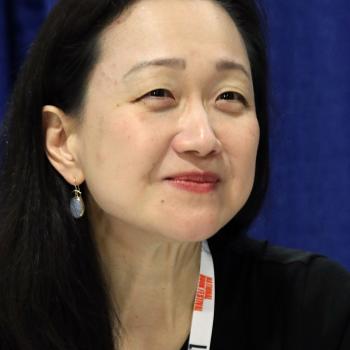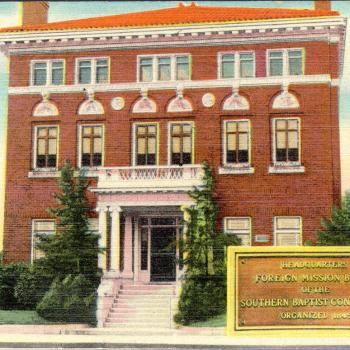Is women’s history depressing? It was the third week of this semester when the question occurred to me. I was starting class for my course on American women’s history 1865 to present and reviewing what we had learned thus far. And I realized that what we had learned thus far included:
- that the majority of Chinese American women in the decades after the Civil War were trafficked
- that married women settlers in the West were often more unhappy than their husbands
- the perennial difficulties freed Black women faced in finding fairly compensated employment
- the lack of safety measures in the garment factories where Jewish immigrant women worked—a lack that led to the famous Triangle Shirtwaist Factory fire in 1911 that killed over a hundred of them
You have to admit, that’s all a bit of a downer.

To be fair, most people’s lives throughout most of human history have been very difficult. Seen from this wide angle, my students and I are a comparatively privileged few—and I don’t say that to downplay the range of difficulties we each experience. Still, it is true that throughout almost all times and places, women have faced more unjust limitations on their lives than men.
I pointed out to students that the articles and books we read did indeed hit hard the reality of the oppression these women faced. But they also always included an emphasis on the women’s agency. These women made choices to seek a better life for themselves and their families within the unjust constraints they encountered. In doing so, they modeled the virtues of hope and endurance, and they left the world a better place than they found it.
That is not depressing at all.
Take Black women in the South:
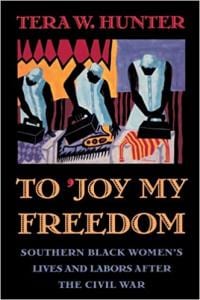 In her beautiful book To ’Joy My Freedom, Tera Hunter details how African American freedwomen often chose work that was more physically demanding (laundering rather than domestic service) in order to be able to do it on their own time and in their own space. They pooled their meager savings into mutual aid societies that enabled them to go on strike to try to raise their wages or to support domestic servants who quit a bad environment until they could find another placement. Barred from most white collar professions and exhausted from a hard day’s physical labor, they nevertheless went out to dance. They attended religious revivals. And they picked up and moved north when conditions got unbearable.
In her beautiful book To ’Joy My Freedom, Tera Hunter details how African American freedwomen often chose work that was more physically demanding (laundering rather than domestic service) in order to be able to do it on their own time and in their own space. They pooled their meager savings into mutual aid societies that enabled them to go on strike to try to raise their wages or to support domestic servants who quit a bad environment until they could find another placement. Barred from most white collar professions and exhausted from a hard day’s physical labor, they nevertheless went out to dance. They attended religious revivals. And they picked up and moved north when conditions got unbearable.
The same week I had these thoughts in my undergraduate course, my graduate course—on women, gender, and sex in American religious history—read both a book and an article that explicitly wrestled with the tension between the discouraging and hopeful aspects of women’s history.
Susan Juster’s book Disorderly Women traces a fascinating creation–fall–semi-redemption narrative of women’s participation in New England Baptist churches. In the colonial era, Baptist churches existed on the edges of a society dominated by Congregationalists and Presbyterians. Baptist women were full voting members who participated in calling pastors and administering church discipline, although pastors were always male. But supporting the American Revolution brought a new opportunity for respectability and participation in the civic square. Women subsequently found themselves stripped of the right to vote in congregational matters or serve on committees. Several decades later, the ideal of safely separate spheres for women and men was embraced by both the larger culture and by Baptist churches—and women’s right to speak in the assembly was returned. Although Baptist churches were not as egalitarian as earlier, eventually women’s voices calling for greater participation were heeded.
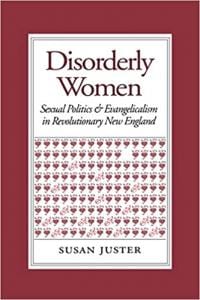 Neither a Jeremiad of declension nor a Whiggish narrative of progress, Disorderly Women nevertheless concludes its final chapter by emphasizing the continuing limitations on women: “However empowering the act of conversion was for evangelical women of the early republic, they inevitably returned to the fold of the church, where power was reserved for men” (208).
Neither a Jeremiad of declension nor a Whiggish narrative of progress, Disorderly Women nevertheless concludes its final chapter by emphasizing the continuing limitations on women: “However empowering the act of conversion was for evangelical women of the early republic, they inevitably returned to the fold of the church, where power was reserved for men” (208).
The article we read that week made a similar move. Sarah Crabtree’s “In the Light and on the Road: Patience Brayton and the Quaker Itinerant Ministry,” in New Critical Studies on Early Quaker Women, 1650–1800, traced the life and writings of an extraordinary female Quaker minister. Quakers, unique among Protestants, asserted the existence of an “inward light,” a pointer God placed within all people to lead them to spiritual truth if they chose to listen. The inward light led people to faith in Christ, helped them interpret the Scriptures, and gave both individual and group direction. Both women and men possessed it. Quakers did not have formal pastors but rather “ministers” who were recognized by the community as hearing the inward light particularly well. (Quaker meetings consisted of everyone sitting in silence until someone was moved by the light to speak.) Women were recognized as ministers on par with men and often commissioned by their local Quaker meetings to serve as traveling preachers.
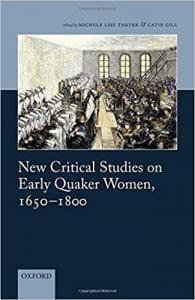 Patience Brayton was one such woman. Crabtree deftly examines both her travails as a traveling preacher and the way she thought of herself as both a woman and a servant of God. Crabtree uncovers that, as a Quaker minister, Brayton blew past ordinary cultural restrictions on women. Simultaneously, as an eighteenth-century woman, she internalized beliefs about women’s weakness as speakers. Brayton left her husband and children for over a year—with their blessing—to serve as a traveling preacher. And she also often remained silent during that year when at mixed-sex rather than single-sex Quaker meetings.
Patience Brayton was one such woman. Crabtree deftly examines both her travails as a traveling preacher and the way she thought of herself as both a woman and a servant of God. Crabtree uncovers that, as a Quaker minister, Brayton blew past ordinary cultural restrictions on women. Simultaneously, as an eighteenth-century woman, she internalized beliefs about women’s weakness as speakers. Brayton left her husband and children for over a year—with their blessing—to serve as a traveling preacher. And she also often remained silent during that year when at mixed-sex rather than single-sex Quaker meetings.
Crabtree, too, chooses to end by emphasizing the restrictions women experienced: “While ‘in the light’ Quaker women stretched many of the gender norms of early America, ‘on the road’ they could not escape the gendered boundaries of cultural expectations. Indeed, their journeys, baptisms, weaknesses and fears served to reinforce them” (145).
Why might both authors have made this choice? Among women’s historians there is often a desire for our recovery of the past to contribute to reform in the present. Highlighting what remained to be done lends itself to highlighting what remains to be done. This can be fully appropriate. There can be historiographical reasons as well. Crabtree, for example, is nuancing the narrative about Quakers that can tend toward hagiography simply because they were so much more egalitarian than other denominations.
This experience has made me reflect, though, that I want to check myself in my own teaching and writing. I want to make sure I don’t tell only about the injustices women have experienced. (And they are legion.) I also want to make sure I let the women of the past speak for themselves as fully human beings, people who experienced opportunities and limitations, privileges and injustices, joys and sorrows, and whose unique life stories have something to teach us.





